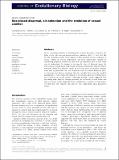Sex-biased dispersal, kin selection and the evolution of sexual conflict.
Abstract
There is growing interest in resolving the curious disconnect between the fields of kin selection and sexual selection. Rankin’s (2011, J Evol Biol 24, 71-81) theoretical study of the impact of kin selection on the evolution of sexual conflict in viscous populations has been particularly valuable in stimulating empirical research in this area. An important goal of that study was to understand the impact of sex-specific rates of dispersal upon the coevolution of male-harm and female-resistance behaviours. But the fitness functions derived in Rankin’s study do not flow from his model’s assumptions and, in particular, are not consistent with sex-biased dispersal. Here, we develop new fitness functions that do logically flow from the model’s assumptions, to determine the impact of sex-specific patterns of dispersal on the evolution of sexual conflict. Whilst Rankin’s study suggested that increasing male dispersal always promotes the evolution of male harm and that increasing female dispersal always inhibits the evolution of male harm, we find that the opposite can also be true, depending upon parameter values.
Citation
Faria , G , Varela , S & Gardner , A 2015 , ' Sex-biased dispersal, kin selection and the evolution of sexual conflict. ' , Journal of Evolutionary Biology , vol. 28 , no. 10 , pp. 1901-1910 . https://doi.org/10.1111/jeb.12697
Publication
Journal of Evolutionary Biology
Status
Peer reviewed
ISSN
1010-061XType
Journal article
Description
This work was supported by Portuguese funds from Fundação para a Ciência e a Tecnologia through cE3c Unit FCT funding UID/BIA/00329/2013 and through SAMV Post-Doctoral Research Grant (SFRH/BPD/66042/2009), and by a Natural Environment Research Council Independent Research Fellowship (AG, Grant Number NE/K009524/1).Collections
Items in the St Andrews Research Repository are protected by copyright, with all rights reserved, unless otherwise indicated.

